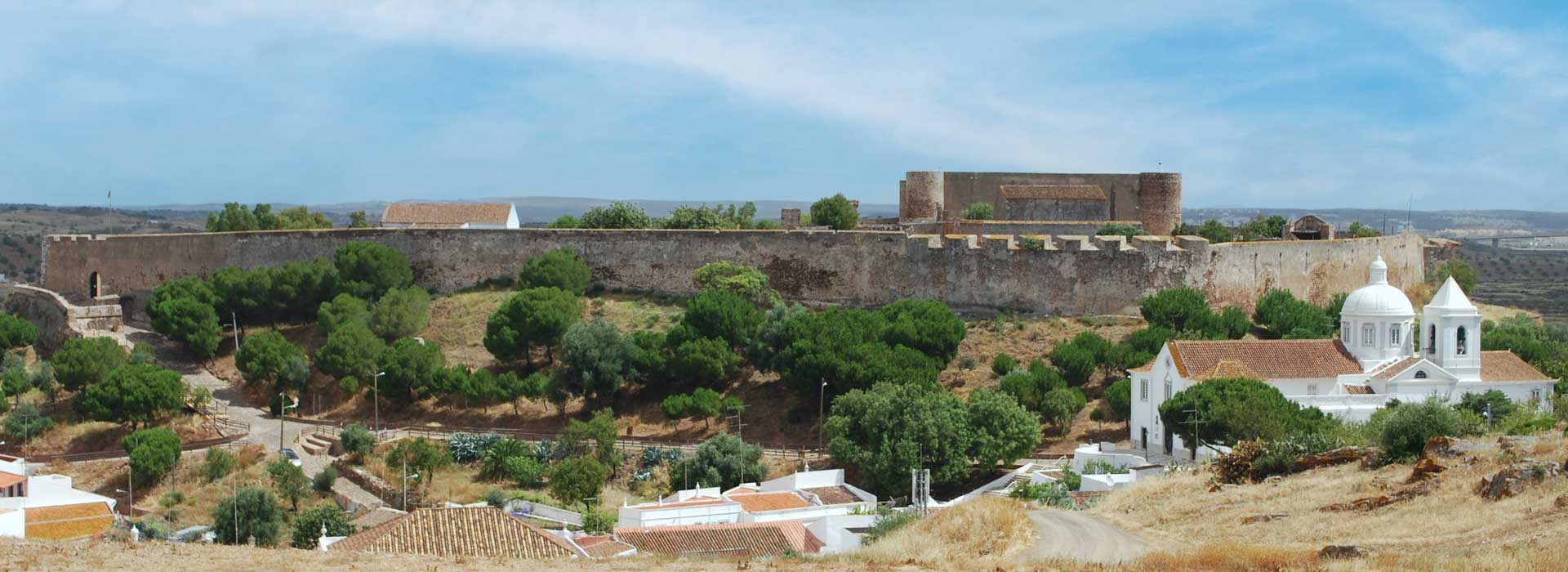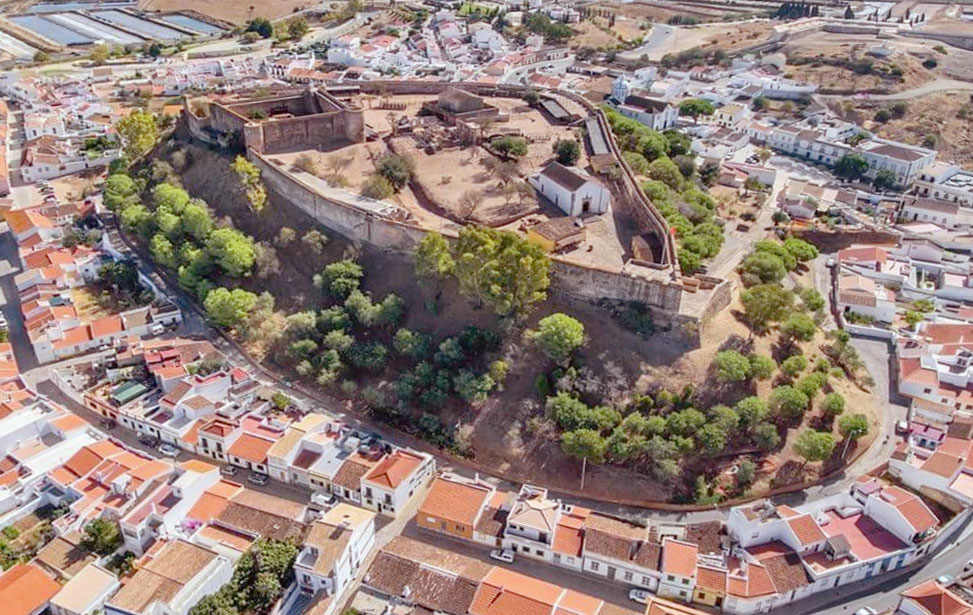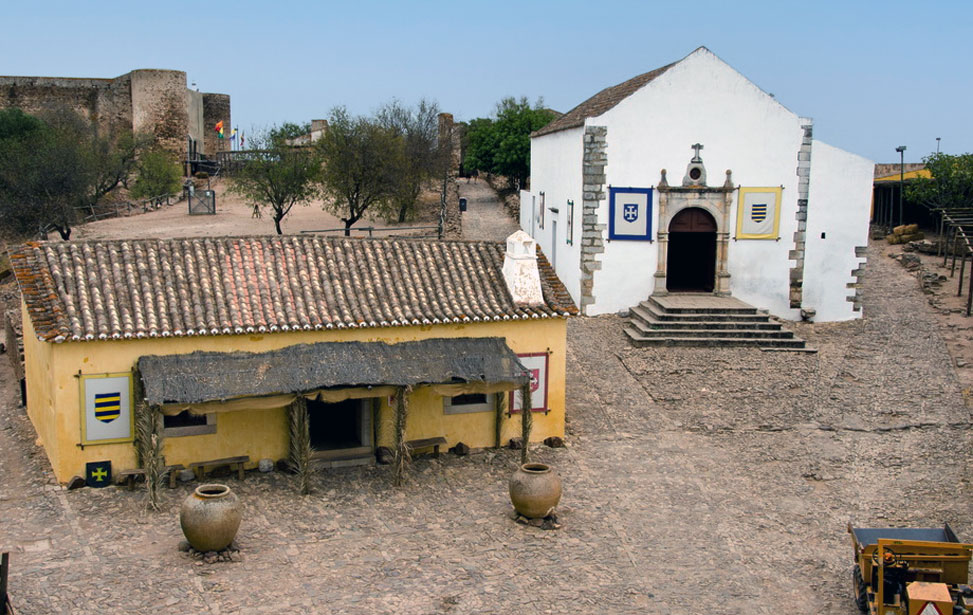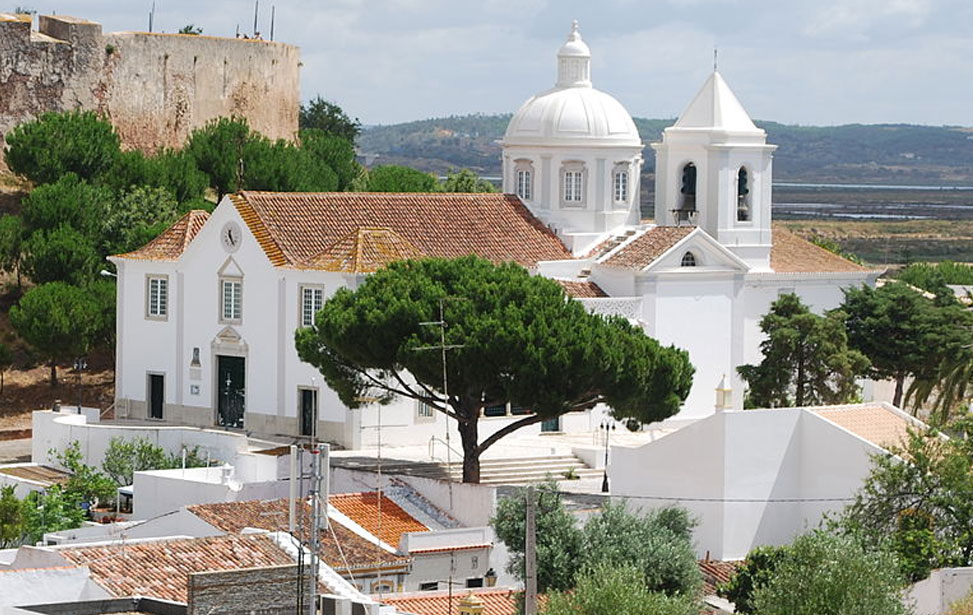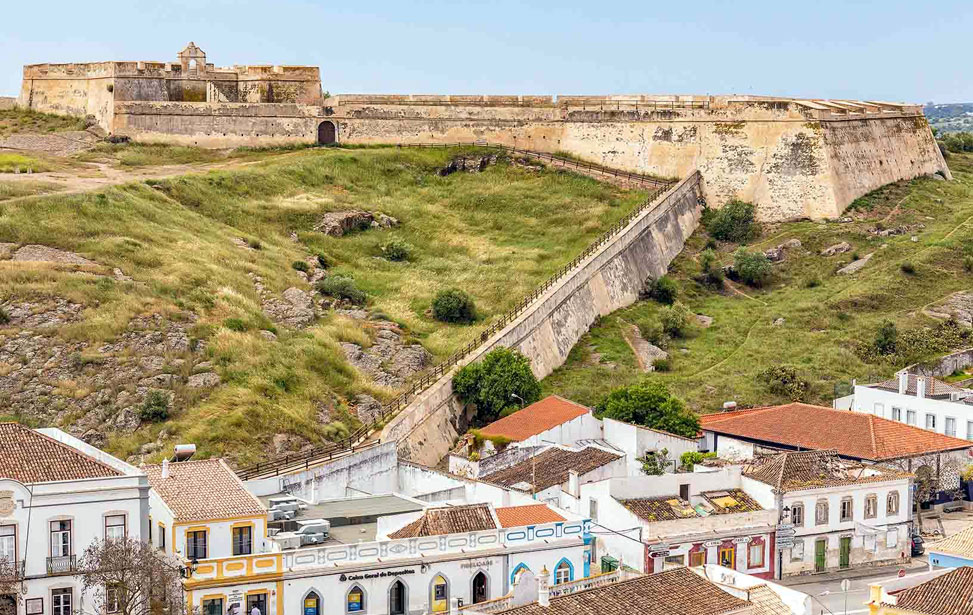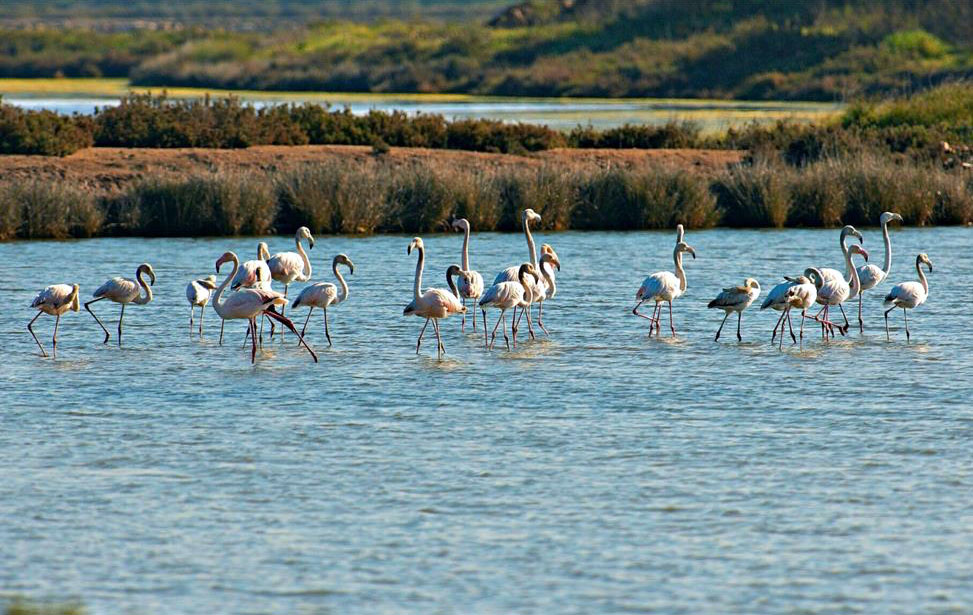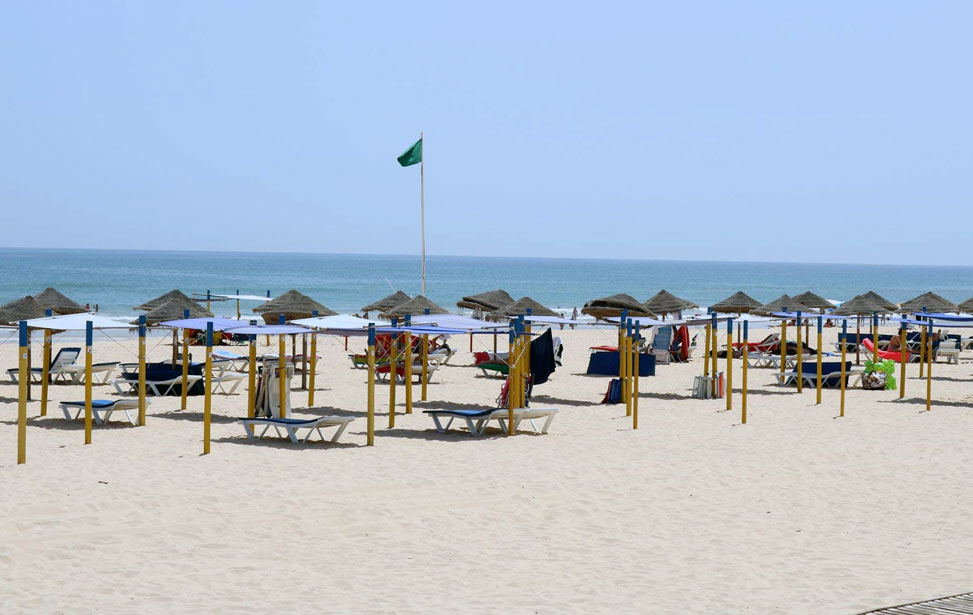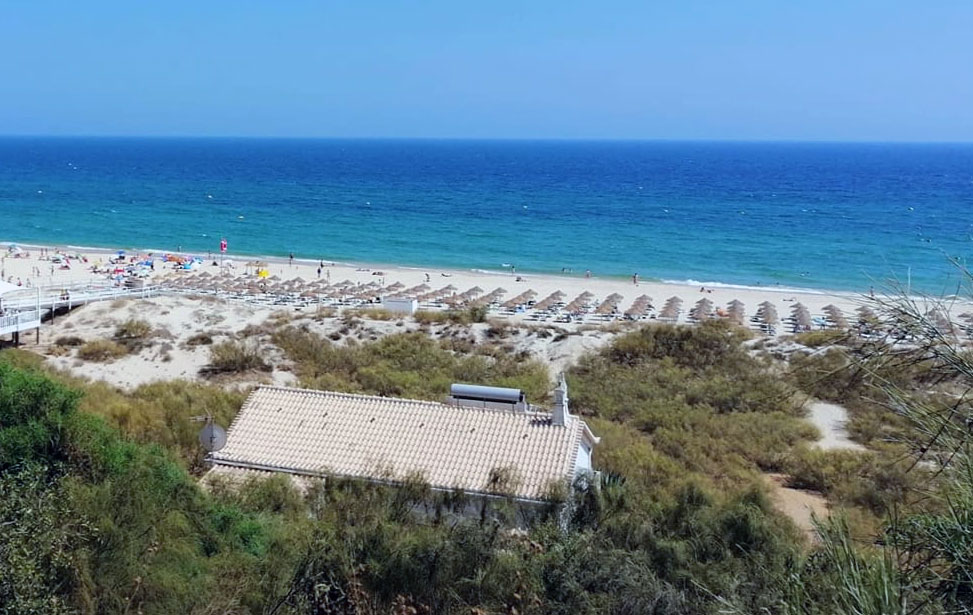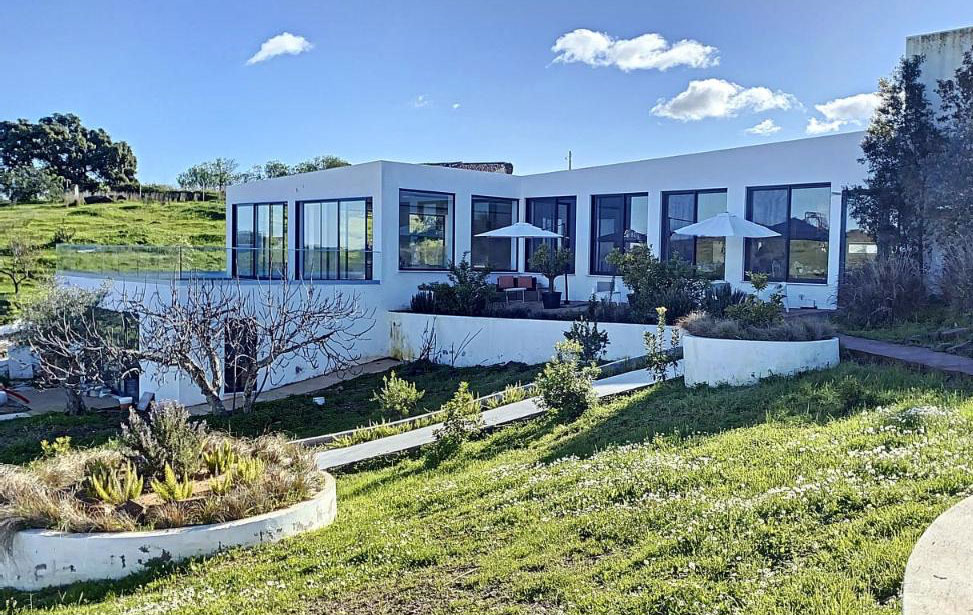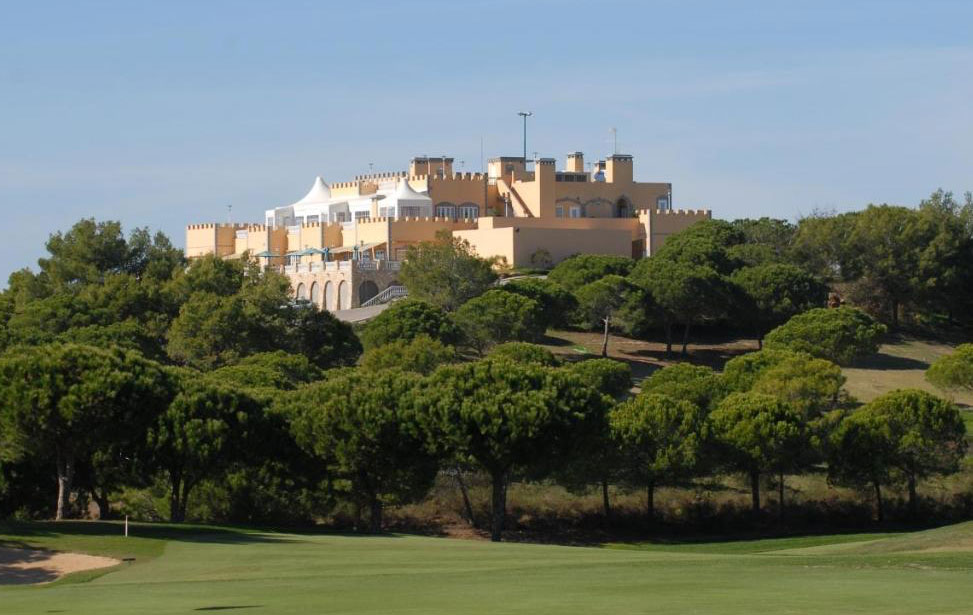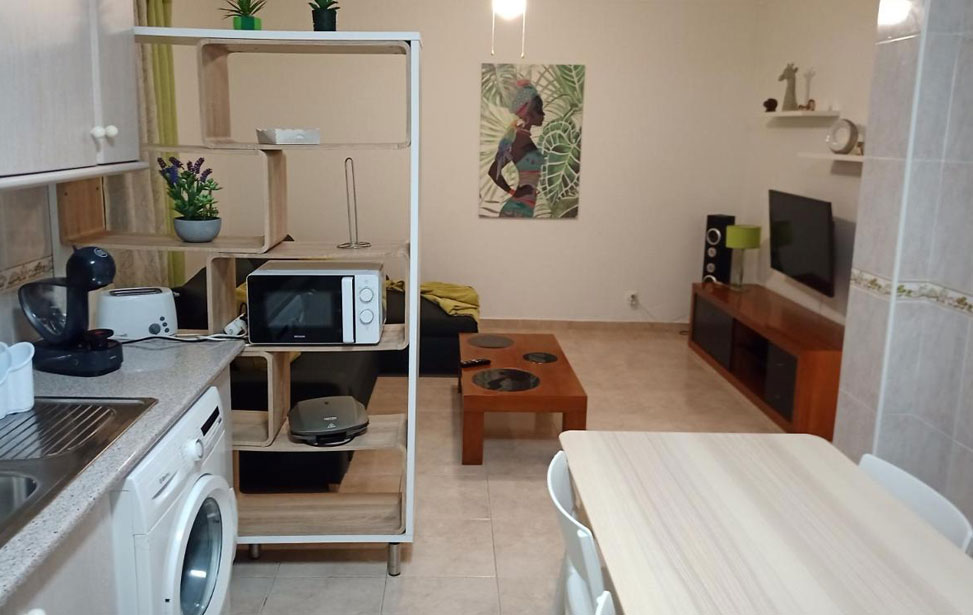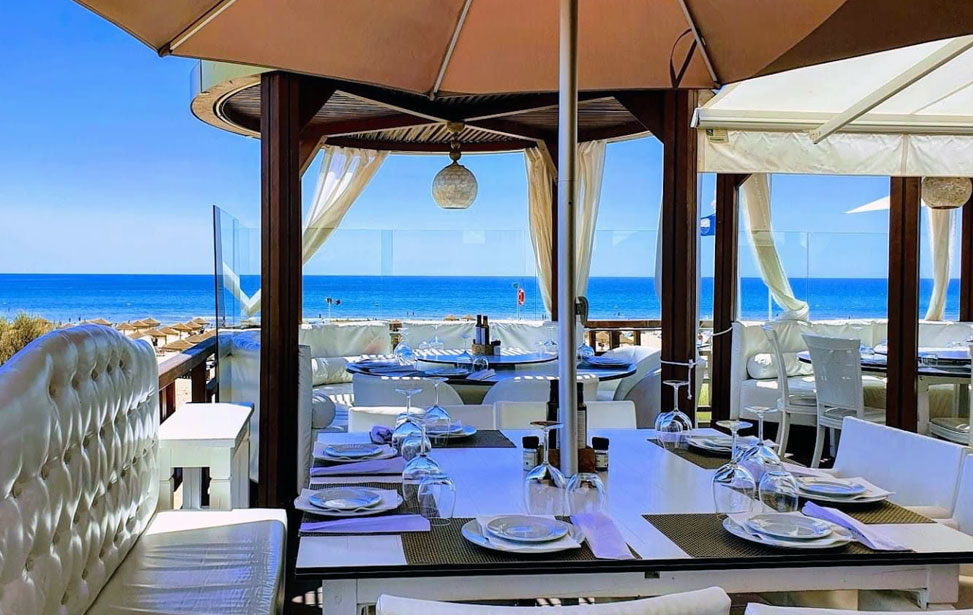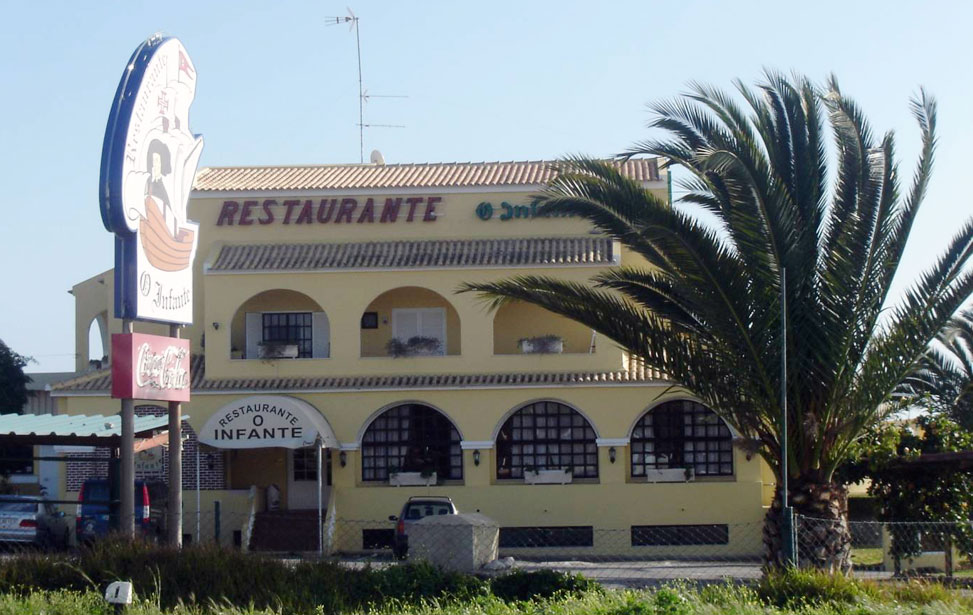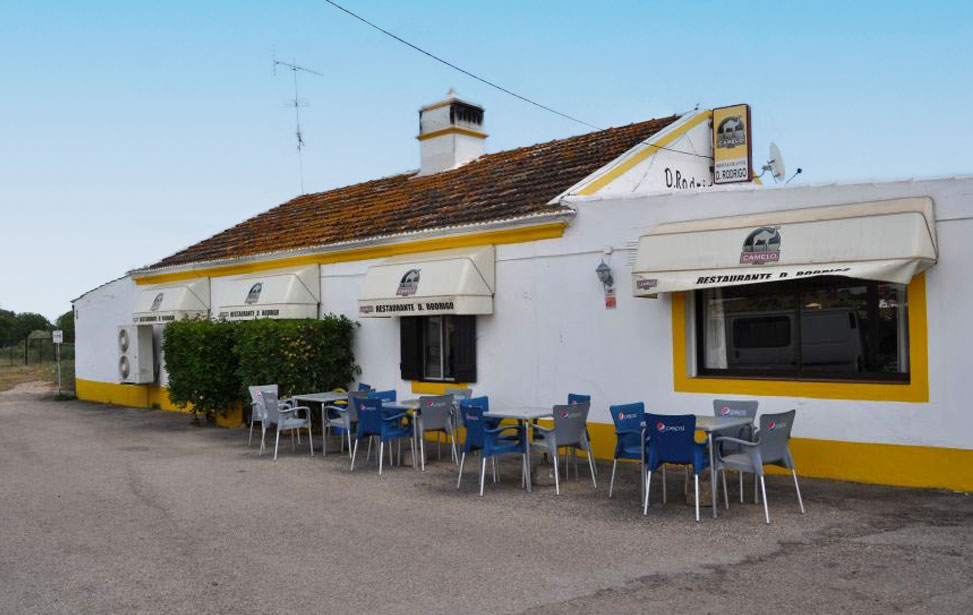The coastline east of Tavira and stretching onwards to the Spanish border and the River Guadiana has some of the most beautiful beaches of Algarve. Devoid of cliffs and rocky outcrops; blessed with swathes of soft golden sands; backed by forests, dunes and shrubs and relatively uncommercial.
Praia da Alagoa (Altura)
The up-and-coming resort of Altura stands alongside the long stretch of sandy beach and dunes. Wooden walkways lead to various parts of the beach, giving you the opportunity (especially on the western walkway) to observe how the dune vegetation changes from the inland edge of the dunes to the side facing the sea. On the inland side, the vegetation makes the dunes appear taller. Next to the sea, where the dunes are higher, there is an abundance of European beach grass, sea holly, fluffy cottonweed and eye-catching beach daffodils. The beach is vast, stretching as far as the eye can see, and the sea is calm and warm. There are facilities for a variety of beach activities and water sports. To the east the greenery around the beach becomes denser, where you can glimpse the resort of Monte Gordo through the coastal pines.
There is plenty of organised parking at the central section of the beach. The various support infrastructures include restaurants, WC, information and recreational facilities. Lifeguards on duty in the high season. This is an accessible beach. | 37° 10’ 11.8”N | 07° 29’ 52.7”W
Praia Verde
As its name suggests, Praia Verde is surrounded by pine forests growing down the gentle hills to the sands. The trees have a curious mushroom shape and the undergrowth is rich and dense throughout the forest. Fabulous panoramic views overlook the sandy coast from the car park serving the beach. This is located inside the tourist complex surrounding the beach. To get down to the sands, you follow a path lined by tall retamal bushes, typical of the sandy eastern Algarve. Once on the beach, you will see delicate plants such as beach grass, eye-catching sea daffodils and aromatic curry plants. An old well on the beach is a remnant from when the sea did not come so far inland. The atmosphere is hot, bright and dry, and the sea is calm and warm.
The various support infrastructures include restaurants, WC, information and recreational facilities. Lifeguards are on duty in the summer holiday season. | 37° 10’ 26.0” N | 07° 28’ 49.3” W
Praia do Cabeço
The path to the beach cuts through a tourist complex where you can still see signs of the old rural landscape. The cork oaks and olive trees gradually give way to the dune pines typical of this coastline. Inside the dense pine forest you will find strawberry trees, mastic trees, wild asparagus and aromatic plants such as curry plants and rosemary. The shade and deep green of the vegetation are comforting. If you look closely, you may be able to spot indolent chameleons and birds with a curious crest reminiscent of a giant butterfly. Close to the beach, the scenery is dominated by dunes with maritime pines and the typical bridal veil broom growing on them, while on the crests of the dunes closest to the sea, you will see beach grass. Next to the beach’s eastern walkway, there is an entrance to a stretch of the “ecovia” (cycle route) that goes to Monte Gordo. The beach is vast yet peaceful. The waters are safe and warm.
There is plenty of informal parking at the eastern, central and western sections of the beach. Ammenities include restaurants, WC, information and recreational facilities. There are lifeguards on duty in the summer holiday season. This is an accessible beach. | 37° 10’ 32.1” N | 07° 28’ 14.2” W





